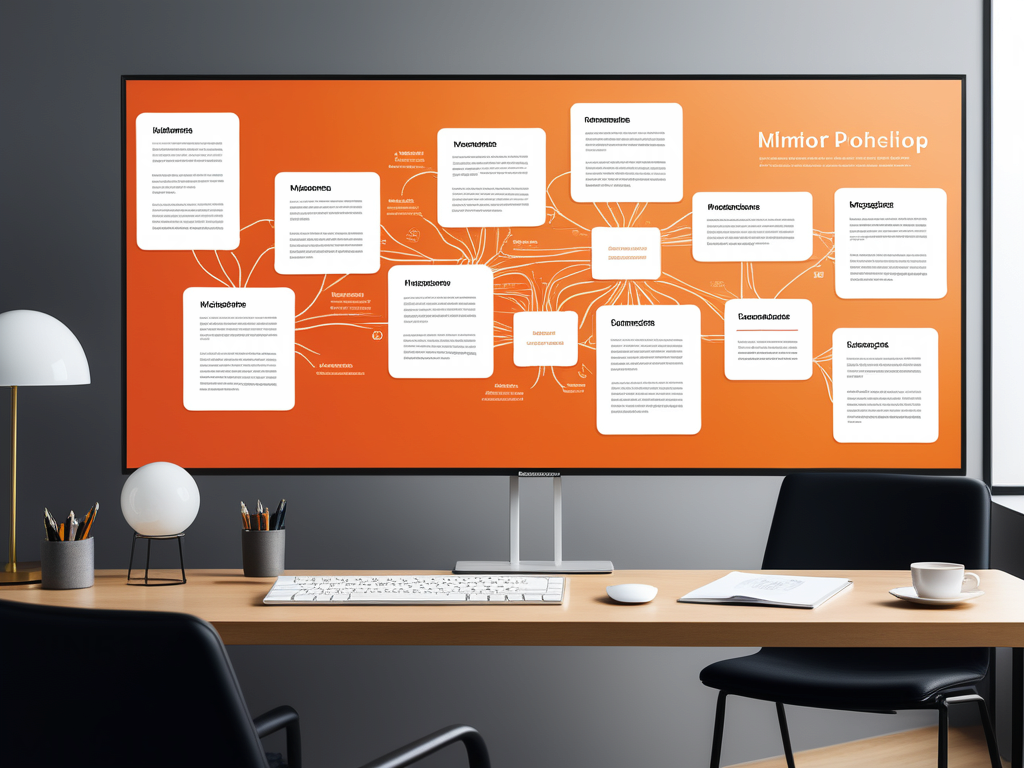Venn diagrams are powerful visual tools that help illustrate the relationships between different sets or groups of data. These diagrams use overlapping circles or other shapes to represent the logical connections, intersections, and differences between various elements. In presentations, Venn diagrams can be incredibly effective in conveying complex information in a clear and concise manner.
Microsoft PowerPoint offers a versatile platform for creating and customizing Venn diagrams, making it an ideal choice for presenters and educators alike. In this comprehensive guide, we’ll explore the step-by-step process of building captivating Venn diagrams within PowerPoint, from setting up the initial layout to adding advanced customizations and interactivity.
Section 1: Setting Up the Slide
The first step in creating a Venn diagram is to prepare the slide canvas in PowerPoint. Here’s how you can get started:
Adding a Blank Slide
- Open PowerPoint and navigate to the slide where you want to insert the Venn diagram.
- On the “Home” tab, click the “New Slide” button (or press “Ctrl + M” on your keyboard).
- In the “Slide Layout” pane, select the “Blank” layout option.
You now have a clean slate to start building your Venn diagram.
Inserting Shapes for the Venn Diagram
- On the “Insert” tab, click the “Shapes” button to reveal the shape gallery.
- Select the appropriate shape(s) for your Venn diagram, such as circles, ovals, or rectangles.
- Draw the shape(s) on the slide by clicking and dragging your mouse.
- Resize and position the shapes as needed using the sizing handles or the “Size” options in the “Format” tab.
Positioning and Aligning Shapes
- To align the shapes precisely, turn on the alignment guides by going to the “View” tab and checking the “Guides” box.
- Use the “Arrange” tools in the “Format” tab to align and distribute the shapes evenly.
- Overlap the shapes to create the intersecting areas of the Venn diagram.
Section 2: Styling the Venn Diagram
Once you have the basic shapes in place, it’s time to add visual flair and labeling to your Venn diagram.
Applying Fill Colors
- Select the shape(s) you want to color.
- On the “Format” tab, click the “Shape Fill” button and choose the desired color option (solid, gradient, picture, or texture).
- Ensure that the colors you select have good contrast and accessibility for visibility.
Adding Text and Labels
- Insert text boxes within the shapes by going to the “Insert” tab and clicking the “Text Box” button.
- Format the text by adjusting the font, size, color, and alignment using the options in the “Home” tab.
- Add labels or titles for the Venn diagram by inserting additional text boxes or using PowerPoint’s built-in labeling tools.
Adjusting Line Styles
- Select the shape(s) you want to modify.
- On the “Format” tab, use the “Shape Outline” options to change the line color, weight, and style (solid, dashed, etc.).
- If needed, you can also add effect lines or arrows to highlight specific areas or relationships within the Venn diagram.
Section 3: Advanced Customization
To take your Venn diagram to the next level, PowerPoint offers several advanced customization options.
Using SmartArt Graphics
- On the “Insert” tab, click the “SmartArt” button to open the SmartArt gallery.
- Choose the appropriate SmartArt layout for Venn diagrams (e.g., “Basic Venn”).
- Customize the SmartArt styles and formatting using the “SmartArt Tools” tabs.
Incorporating Icons or Images
- Insert icons or clipart images within the shapes by going to the “Insert” tab and clicking the “Icons” or “Pictures” buttons.
- Resize and position the images appropriately using the sizing handles or the “Picture Tools” tab.
- Use images to represent concepts or data within the Venn diagram for added visual interest.
Creating Interactive or Animated Venn Diagrams
- Apply entrance or emphasis animations to the shapes by going to the “Animations” tab and selecting the desired animation effect.
- Set up triggers or click events for interactive diagrams by using the “Trigger” options in the “Animations” tab.
- Use motion paths to create dynamic Venn diagram presentations by animating the movement of shapes across the slide.
Section 4: Best Practices and Tips
While creating Venn diagrams in PowerPoint, keep these best practices in mind:
- Maintain a clean and uncluttered design by avoiding excessive elements or busy backgrounds.
- Use consistent styles and formatting throughout the presentation to maintain a cohesive look.
- Ensure proper contrast and accessibility by choosing colors and text sizes that are easy to read and distinguish.
- Consider the audience and purpose when styling the Venn diagram, as different presentations may require different visual approaches.
Section 5: Saving and Sharing Venn Diagrams
Once you’ve created your Venn diagram, you may want to save or share it for future use or distribution.
Saving the PowerPoint File
- Go to the “File” menu and select “Save” or “Save As”.
- Choose the desired file location and format (e.g., .pptx, .ppt).
- Click “Save” to preserve your PowerPoint file with the Venn diagram.
Exporting the Venn Diagram as an Image or PDF
- Select the Venn diagram on the slide.
- Go to the “File” menu and choose “Export” or “Save As”.
- Select the desired image format (e.g., .png, .jpg) or PDF.
- Adjust the export settings as needed (resolution, quality, etc.) and click “Save”.
Embedding the Venn Diagram in Other Documents or Websites
- Export the Venn diagram as an image or PDF file (see above steps).
- Open the document or website where you want to embed the Venn diagram.
- Follow the appropriate steps to insert the exported image or PDF file into the desired location.
Conclusion
Creating visually appealing and informative Venn diagrams in PowerPoint can be a powerful way to communicate complex relationships and concepts effectively. By following the steps outlined in this comprehensive guide, you’ll be equipped with the knowledge and skills to design stunning Venn diagrams that captivate your audience and enhance your presentations.
Remember, the key to successful Venn diagrams lies in striking the right balance between clarity and visual appeal. Experiment with different styles, colors, and customizations to find the perfect combination that resonates with your audience and conveys your message effectively.
As you continue to explore PowerPoint’s capabilities, don’t hesitate to push the boundaries and explore advanced techniques such as interactivity and animation. These features can transform your Venn diagrams into dynamic and engaging experiences that leave a lasting impression.
If you have any questions or feedback, feel free to reach out – we’re always eager to learn and improve. Happy designing!








